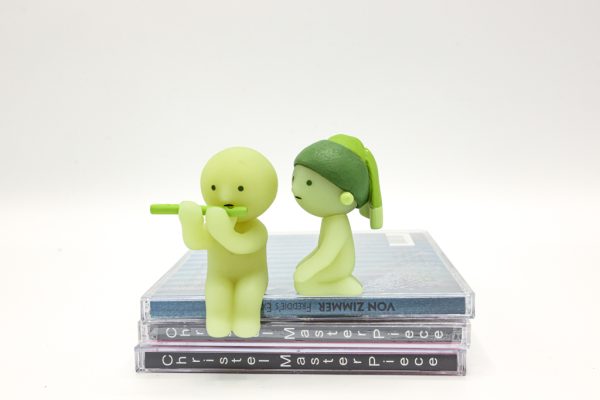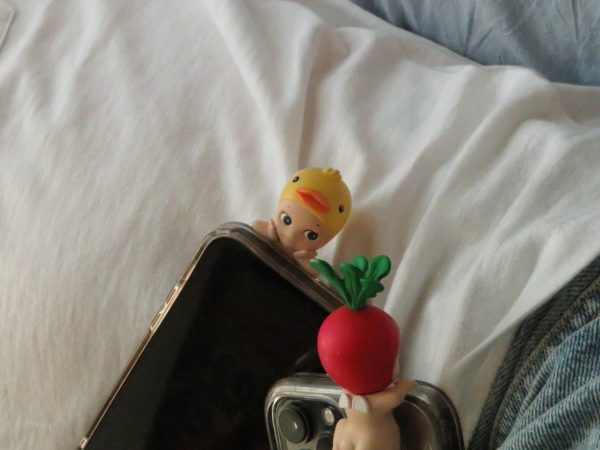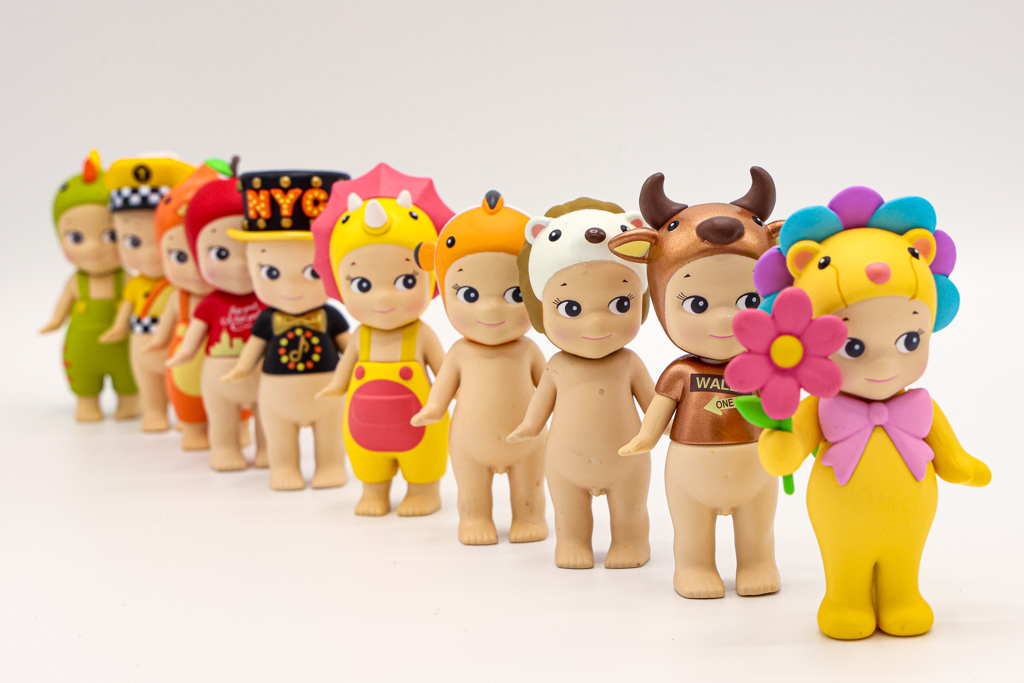An army of three-inch plastic babies has invaded our school. Clipped to phones, hanging from keychains, perched on desks — Sonny Angels, the collectible cherub-like figurines sold in a mystery box, are unavoidable. And Sonny Angels are only the tip of the iceberg — as a whole, collectible figurines are experiencing a golden age.
While it feels like these Sonny Angels came out of nowhere, Toru Soeya began producing these figurines two decades ago. Since their creation, Sonny Angels have made a monumental impact, transforming local businesses and shifting the dialogue about how we engage with physical merchandise. And, of course, this trend has reached NYU — and students have a lot to say about the phenomenon.
“These are gonna be family heirlooms,” said CAS first-year Hanne Brabander about her Sonny Angels collection. “It’s gonna be 2096 and someone is gonna pull out a dusty Sonny Angel.”
Beginning her collection over two years ago, Brabander is no rookie to the world of collectible baby figurines. Today, she boasts a tally of nearly 20 Sonny Angels spread between her home in Massachusetts and her NYU dorm, and the collection is growing by the day.
For her, it all started via word of mouth. Brabander’s high school friend introduced her to the gambling-like rush of not knowing which angel figurine each box would reveal. After opening her first box to find a little baby with a horse hat, Brabander was repulsed but hooked, and she went right back to the store to get another box.
Even though Brabander’s second purchase yielded much cuter results in her eyes, the satisfaction did not put an end to her spending.
“It spiraled — every time I went into the city, I would buy one,” Brabander said.
Two years and a couple of hundred dollars worth of plastic babies later, Brabander is not looking back. She asserts that the financial impact is still considerably lower than that of many other popular hobbies.
Brabander is not alone in her maximalist pursuit of clutter. With six ear piercings, over a dozen rings across two hands and a collection of nearly 30 Smiski figurines, LS first-year Allison Engel is no stranger to collecting material items.
Though not much of a Sonny Angel collector, Engel is very familiar with the world of baby figurines. Engel’s blind box figurines of choice, Smiskis, are often seen as the less-humanoid counterparts to everyone’s favorite plastic babies. As opposed to being cherub-like and mostly naked, Smiskis look like green little aliens with smiley faces. To inspire collectors like Engel, each figurine comes in a different pose or with some different type of prop. Engel is unsure as to why collectible blind box items exploded into the mainstream recently. Similar to Brabander, she began her collection just a few years ago.

Both collectors attest to the rush of opening a new box and finding out which toy is inside.
“There’s anticipation that builds up,” Engel says. “There is definitely a gambling feeling.”
No matter what draws collectors to keep buying, the recent cultural impact of these miniature toys cannot be understated. Yet, many students remain hesitant about the trend, whether it be for financial or aesthetic reasons.
“I don’t have the money to spend on those small naked toys,” said LS sophomore Michael Wang. “They kind of creep me out, anyways.”
For the less maximalist and sentimental students, like Wang, Sonny Angels do not offer much utility. Rather, they just drain money and take up space.
As for those who can look past the toys’ shortcomings, though, it seems that Sonny Angels and Smiskis are here to stay — at least for a little while longer. For most college students, their bank account draws the line.
“Be careful,” Brabander said when asked to give advice to potential collectors. “$10 may not feel like a lot, but it will add up.”

Contact Juan Hanes at [email protected].
























































































































































